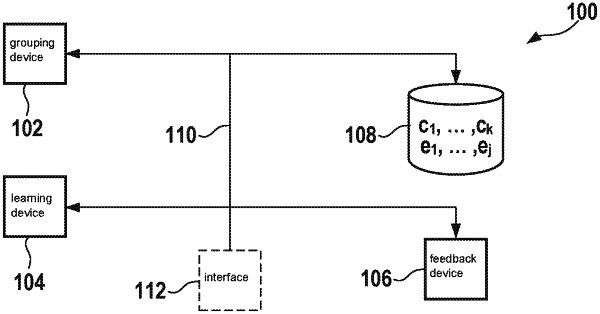| CPC G06N 5/04 (2013.01) [G06F 18/24 (2023.01); G06N 20/00 (2019.01)] | 11 Claims |

|
1. A computer-implemented method for grouping target entities into clusters and storing the target entities into a knowledge graph, the method comprising:
in a computation step for the target entities, determining a base association in which a cluster is associated with each of the target entities as a function of an association for entities;
determining inference rules as a function of the association for entities and as a function of the base association, each of the inference rules defining an association of entities with one of the clusters;
determining an altered association as a function of the association for entities and the inference rules, wherein the base association includes subjects and objects as entities, the subjects representing the target entities, the objects representing clusters, the association defining predicates, each of the predicates associating an object with a subject, each of the inference rules including a trunk and a head that is associated with the trunk, wherein the head is a triplet of form h(X, Y), where h defines a predicate, X defines a subject, and Y defines an object, the trunk being defined as a function of at least one predicate or as a function of a conjunction of least two predicates, the head defining, for a subject that represents one of the target entities, with which of the objects, which represent the clusters, the subject is associated;
checking whether a difference between the base association and the altered association falls below a threshold value;
based on the difference falling below the threshold value, outputting or storing an association of the target entities with the clusters; and
based on the different not falling below the threshold, (i) determining a feedback value as a function of the difference, and (ii) determining a replacement association as a function of the association for entities and the feedback value, which replaces the association for a new execution of the computation step.
|